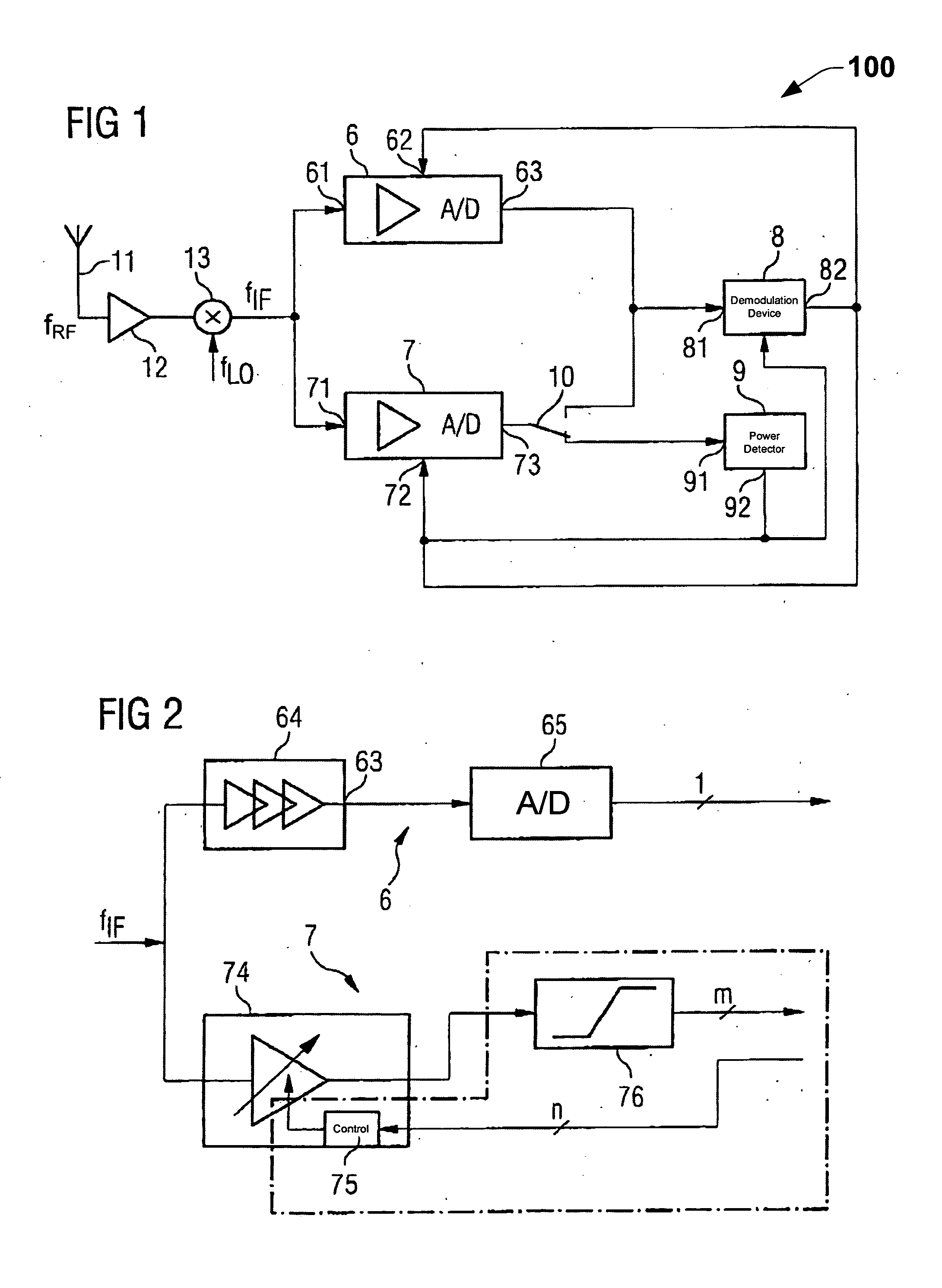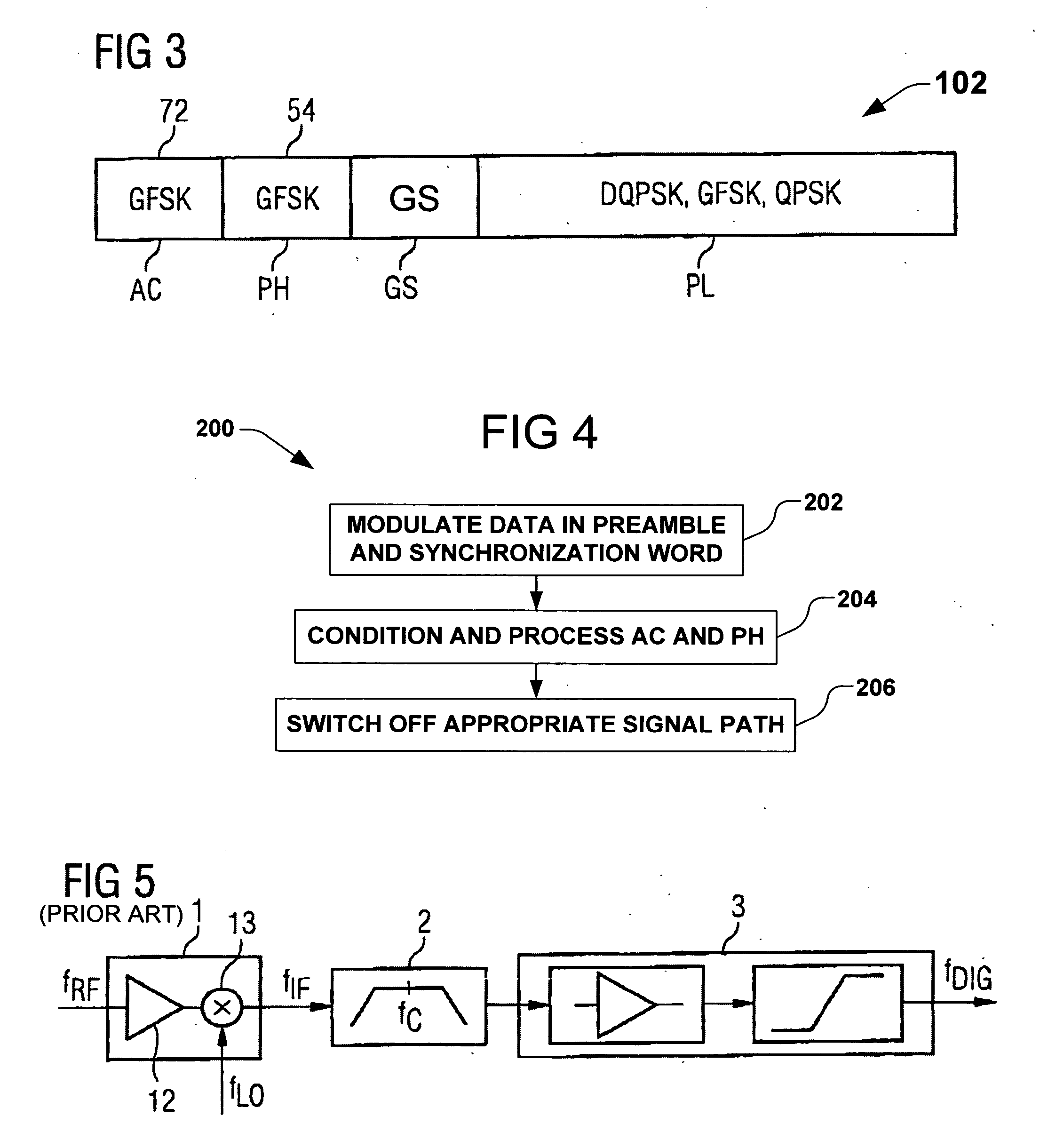Signal processing method, particularly in a radio-frequency receiver, and signal conditioning circuit
a signal processing and radio frequency receiver technology, applied in the field of signal processing methods, can solve problems such as the change of data rate/type of modulation, and achieve the effect of reducing current consumption and power consumption, and already reducing current consumption of the sam
- Summary
- Abstract
- Description
- Claims
- Application Information
AI Technical Summary
Benefits of technology
Problems solved by technology
Method used
Image
Examples
Embodiment Construction
[0030] The present invention is directed generally to a method for signal processing, and a signal conditioning circuit and method of use thereof. Accordingly, the present invention will now be described with reference to the drawings, wherein like reference numerals may be used to refer to like elements throughout. It should be understood that the description of these aspects are merely illustrative and that they should not be interpreted in a limiting sense. In the following description, for purposes of explanation, numerous specific details are set forth in order to provide a thorough understanding of the present invention. It will be evident to one skilled in the art, however, that the present invention may be practiced without these specific details.
[0031] In accordance with one exemplary aspect of the invention, FIG. 1 illustrates the signal conditioning circuit 100 on a receiving path for Bluetooth signals. An antenna 11 is connected to the first input of a mixer 13 via a lo...
PUM
 Login to View More
Login to View More Abstract
Description
Claims
Application Information
 Login to View More
Login to View More - R&D
- Intellectual Property
- Life Sciences
- Materials
- Tech Scout
- Unparalleled Data Quality
- Higher Quality Content
- 60% Fewer Hallucinations
Browse by: Latest US Patents, China's latest patents, Technical Efficacy Thesaurus, Application Domain, Technology Topic, Popular Technical Reports.
© 2025 PatSnap. All rights reserved.Legal|Privacy policy|Modern Slavery Act Transparency Statement|Sitemap|About US| Contact US: help@patsnap.com



